Related Research Articles

LVN Pictures, Inc. was a Filipino film studio that was considered one of the biggest in the history of Philippine cinema and its foremost establishment in motion picture post-production until 2005. In its heyday of motion picture production, LVN Pictures has been compared to that of the Metro-Goldwyn-Mayer Studios (MGM) of Hollywood because it had, under contract, the biggest stars and film craftsmen of the period. Before its closure in 2005, LVN Pictures was known as one of the oldest living film studios in the country.

Carlota "Lota" Delgado-de la Rosa was a Filipino actress noted mostly for her pre-World War II career. She was born in Iloilo City.

Nicanor Santa Ana Abelardo was a Filipino composer known for kundiman songs he wrote before the Second World War.

Sampaguita Pictures was a Philippine film production company. It was named for the Philippine national flower, sampaguita. Though no longer functioning, the company's Sampaguita Compound remains in Quezon City.
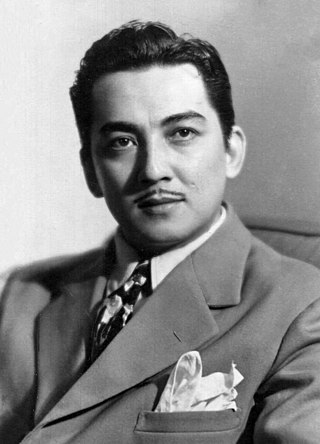
Regidor Lim de la Rosa, professionally known as Rogelio de la Rosa, was one of the most popular Filipino matinee idols of the 20th century. He is also remembered for his statesmanship, in particular his accomplishments as a diplomat. Elected to the Philippine Senate from 1957 to 1963, he was the first Filipino film actor to parlay his fame into a substantial political career, paving the way for other future Filipino entertainers-turned-politicians such as Senators Ramon Revilla Sr., Tito Sotto, Ramon "Bong" Revilla Jr., Jinggoy Estrada, Lito Lapid, Freddie Webb, Robin Padilla, and President Joseph Estrada.
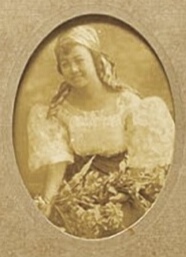
Honorata de la Rama-Hernandez, commonly known as Atang de la Rama, was a singer and bodabil performer who became the first Filipina film actress.
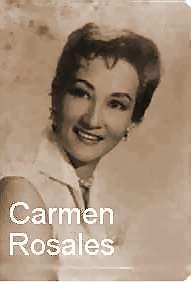
Carmen Rosales, better known by her stage name Carmen Rosales and by her nickname Mameng, was a noted Filipina actress and World War II guerilla fighter. Her acting career spanned the decades immediately before, during, and after World War II. Her tremendous commercial success and wide fan base before the war led to her being considered the original superstar of Philippine movies. Her stage name, Carmen Rosales, was taken from her hometown of Carmen, Rosales in the province of Pangasinan.
Teddy Benavídez is a Filipino actor who made his film debut on 1936's Mga Kaluluwang Napaligaw aka Unguided Spirit. His first screen name is Teodoro Benavidez and changed it to Teddy when he first made his movie under Sampaguita Pictures in 1937's Bituing Marikit starring Elsa Oria & Rogelio dela Rosa.

Rose Stagner, better known by her screen name Rosa del Rosario, was a Filipino-American actress. Regarded as one of the most prominent figures during the Golden Age of Philippine Cinema, she has appeared in 60 photoplays and was the first Filipino actress to appear in multiple Hollywood films Border Bandits (1946) and Anna and the King of Siam (1946). She was the first actress to play the Filipino comic-book superhero Darna on screen in 1951. She was honored with a special Ani Award and was inducted into the Eastwood City Walk of Fame for her significant contributions to Philippine film industry.
Marlene Daudén is considered one of the greatest Filipina drama actresses of all time. She achieved her legendary status as a film thespian during her film career that spanned from the 1950s up to the 1970s. During the height of her fame, she was one of the most bankable stars of Sampaguita Pictures, which used to be one of the leading Philippine movie studios of the era.

Elsa Irma Aguirre Juárez is a Mexican actress from the Golden Age of Mexican Cinema. Her work in more than 40 films and telenovelas has earned her multiple accolades, such as the Golden Ariel for her outstanding cinematographic career and a Luna del Auditorio for her life in entertainment, among other recognitions.
Bienvenido Munoz Noriega Jr. (1952–1994) was a Philippine playwright.
Vaudeville in the Philippines, more commonly referred to as bodabil, was a popular genre of entertainment in the Philippines from the 1910s until the mid-1960s. For decades, it competed with film, radio and television as the dominant form of Filipino mass entertainment. It peaked in popularity during the Japanese occupation in the Philippines from 1941 to 1945. Many of the leading figures of Philippine film in the 20th century, such as Dolphy, Nora Aunor, Leopoldo Salcedo and Rogelio de la Rosa, began their showbusiness careers in bodabil.

Don Fabián de la Rosa y Cueto was a Filipino painter. He was the uncle and mentor to the Philippines' national artist in painting, Fernando Amorsolo, and to his brother Pablo. He is regarded as a "master of genre" in Philippine art.
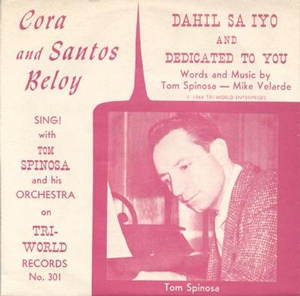
"Dahil Sa Iyo" is a song by Mike Velarde, Jr., written in 1938 for the movie, Bituing Marikit and sung by Rogelio de la Rosa. A version with English-Tagalog lyrics, recorded in 1964, was a hit in the United States and continues to be popular in Filipino communities on American soil.
Basil Salvador Valdez is a Filipino singer. He has received several Tinig Awards and the 1991 Tanglaw ng Lahi Award from Ateneo de Manila University.

Sylvia Reyes La Torre-Perez de Tagle was a Filipino singer, actress, and radio star.
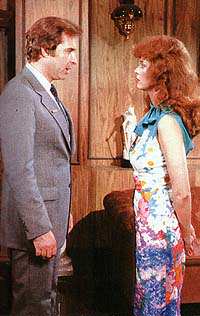
Vanessa is a Mexican telenovela produced by Valentín Pimstein for Televisa in 1982. Is a remake of the successful Brazilian telenovela Idolo de Pano.
Kundiman is a genre of traditional Filipino love songs. The lyrics of the kundiman are written in Tagalog. The melody is characterized by a smooth, flowing and gentle rhythm with dramatic intervals. Kundiman was the traditional means of serenade in the Philippines.
Bituing Walang Ningning is a 1985 Filipino drama musical film directed by Emmanuel Borlaza and starring Sharon Cuneta, Christopher de Leon, and Cherie Gil. The screenplay by Orlando Nadres is based on the komiks serial of the same name by Nerissa Cabral.
References
- ↑ Sergio, Leo P. (April 1, 1988). "The 'kundiman' in Philippine cinema". Manila Standard. Retrieved January 16, 2024.
- ↑ Umerez, Remy M. (December 9, 2006). "Basil Valdez revives Filipino classics". Philippine Daily Inquirer. Retrieved January 16, 2024.
- ↑ Godinez, Bong (April 2, 2010). "German Moreno revisits silver screen's colorful years with Pinoy Cine Klasika". PEP.ph. Retrieved January 16, 2024.